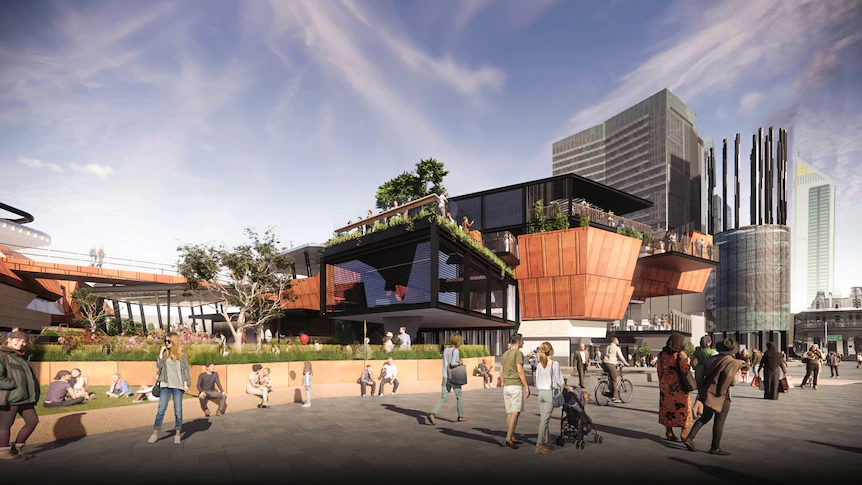Designing with Country blog series #1 of 5
Designing with Country is a construction and design philosophy incorporating the rich tapestry of Aboriginal knowledge, values, and traditions. It encourages architects and designers to derive inspiration from the land, culture, and people they serve. In this first instalment of our blog series, we will examine the current theories and concepts of Designing with Country and the significance of these theories and concepts to contemporary design practices.
The Importance of Place of Origin More than just a place, “Country” represents the spiritual, cultural, and ancestral ties that Aboriginal people have to the land. When the natural environment is honoured, and the community’s well-being is prioritised, meaningful and sustainable design may be achieved via an appreciation of Country.
Designing with Country Principal Ideas and Illustrations: We will explore the fundamental principles of Designing with Country, as outlined in the “Connecting with Country Framework” by the Government Architect of New South Wales. These principles include respecting the stories of the land, embracing the profound knowledge of Aboriginal custodians, and encouraging a collaborative design approach.
Respecting the Stories of the Land Dreamtime or Dreaming is integral to Aboriginal culture. They contain information about the formation of the land, the interrelationships between the elements, and the moral principles that govern human behaviour. Designing with Country necessitates an appreciation and observance of these stories, as they provide invaluable insights into the history and significance of the land.
One example is the Yagan Square in Perth, Western Australia (image below), which honours Noongar culture and storytelling. The design of the square integrates artwork and sculptures that honour the history of the land, thereby connecting visitors to the tales of the past.

Taking into account the Knowledge of Aboriginal Custodians, Aboriginal peoples have been stewards of this Country for millennia, and as a result, they have a wealth of information about it. Engaging with traditional land custodians to learn about their knowledge and incorporate it into the design process is an essential part of the practice of “Designing with Country.” Designers can build environments that are in tune with the spirit of the land when they acknowledge indigenous people as the authorities of their own culture.
‘The 2KW Binya’ at the Adelaide Botanic Garden exemplifies this approach. During the design phase, Aboriginal elders were consulted to gain insight into the site’s historical significance. Consequently, the garden now reflects the cultural values of the Kaurna people and honours their role as stewards.
Facilitating an Approach Based on Collaboration, Designing with Country initiative promotes collaborative efforts between Aboriginal people and the design and architectural communities. Co-created culturally sensitive and sustainable environments can be achieved through a learning process that goes in both directions and involves exchanging information and ideas by both sides.
The Tjibaou Cultural Centre in New Caledonia (image below), which has won numerous awards, is a great example of the potential of working together. The renowned architect Renzo Piano was tasked with designing the centre, and he did it in collaboration with the local Kanak population. The result is an architectural masterpiece honing Kanak customs and is in tune with the surrounding natural environment.

Opportunities and Difficulties: While the concept of Designing with Country is gaining acceptance in current design debate, it is not without obstacles. We will look at some of these issues, such as balancing different cultural viewpoints and ensuring the genuine participation of Aboriginal voices in the design process. In addition, we will talk about how these difficulties create opportunities for innovative and sustainable design solutions.
Designing with Country challenges conventional Western design principles, resulting in misunderstandings and misconceptions regarding its applicability and efficacy. To address this, educating stakeholders on the cultural significance of Aboriginal philosophies and the design benefits they bring is essential. A more inclusive and harmonious design process can be achieved by cultivating mutual regard and comprehension.
The possibility of a design approach that is more inclusive is one of the opportunities that are made available by the Designing with Country initiative. The designers have a better chance of comprehending the requirements and goals of the Aboriginal communities if they involve those groups from the very beginning of the project. This inclusiveness leads to creating spaces that not only represent the community’s identity but also generate a sense of pride and ownership among the members of that community.
The practice of Designing with Country emphasises ecological friendliness and the utilisation of resources sourced in the immediate vicinity. This strategy benefits local economies, as it encourages economic growth while assisting Native American enterprises. Projects become more economically viable and environmentally responsible when they consider the long-term effects of design decisions on the community in which they will be implemented.
Having reverence for sacred sites: There are sacred places in Aboriginal societies that hold a high level of cultural significance. When designing with Country, it is necessary to acknowledge and respect these locations, which frequently calls for redesigning project ideas to prevent disruption. This procedure helps designers become more culturally sensitive, which is beneficial to preserving sacred areas.
Architecture and design are potent vehicles that can be used to represent a culture’s sense of self. The incorporation of Aboriginal worldviews into design practices enables places to function as representations of a culture’s history and identity. Architects and interior designers can create spaces that instill a sense of community pride and belonging by including components that are representative of local customs and anecdotes in their work.
As this blog series progresses, we will delve deeper into Aboriginal philosophies such as “relationally,” “congenial fellowship,” “storytelling,” “two-way learning and sharing,” and “autonomy.” Each philosophy will be analysed in depth, with real-world examples and case studies illustrating their implementation in construction and design.
In the next instalment, we examine the transformative impact of “relationally,” “friendly fellowship,” and “storytelling” on design. We will gain insights into how Designing with Country can create spaces that celebrate culture, respect the land, and nurture a sense of belonging through an engaging journey.
* ends *
At YarnnUp, we offer a wide range of resources and programs to provide organisations with a holistic and comprehensive approach to their reconciliation journey including Design Principles in Construction.
Want to know more? Our contact details can be found here when you’d like to have a yarn.



